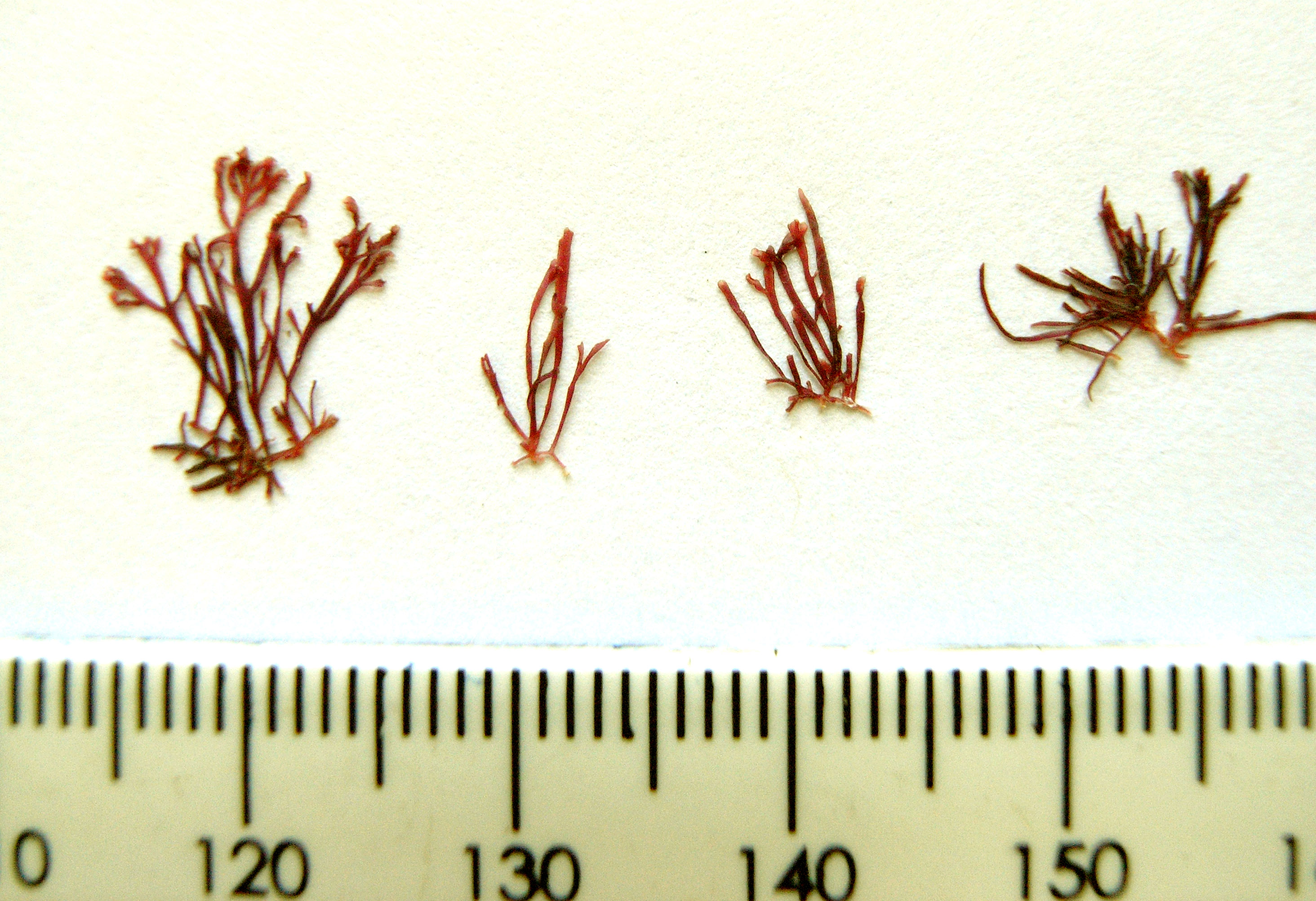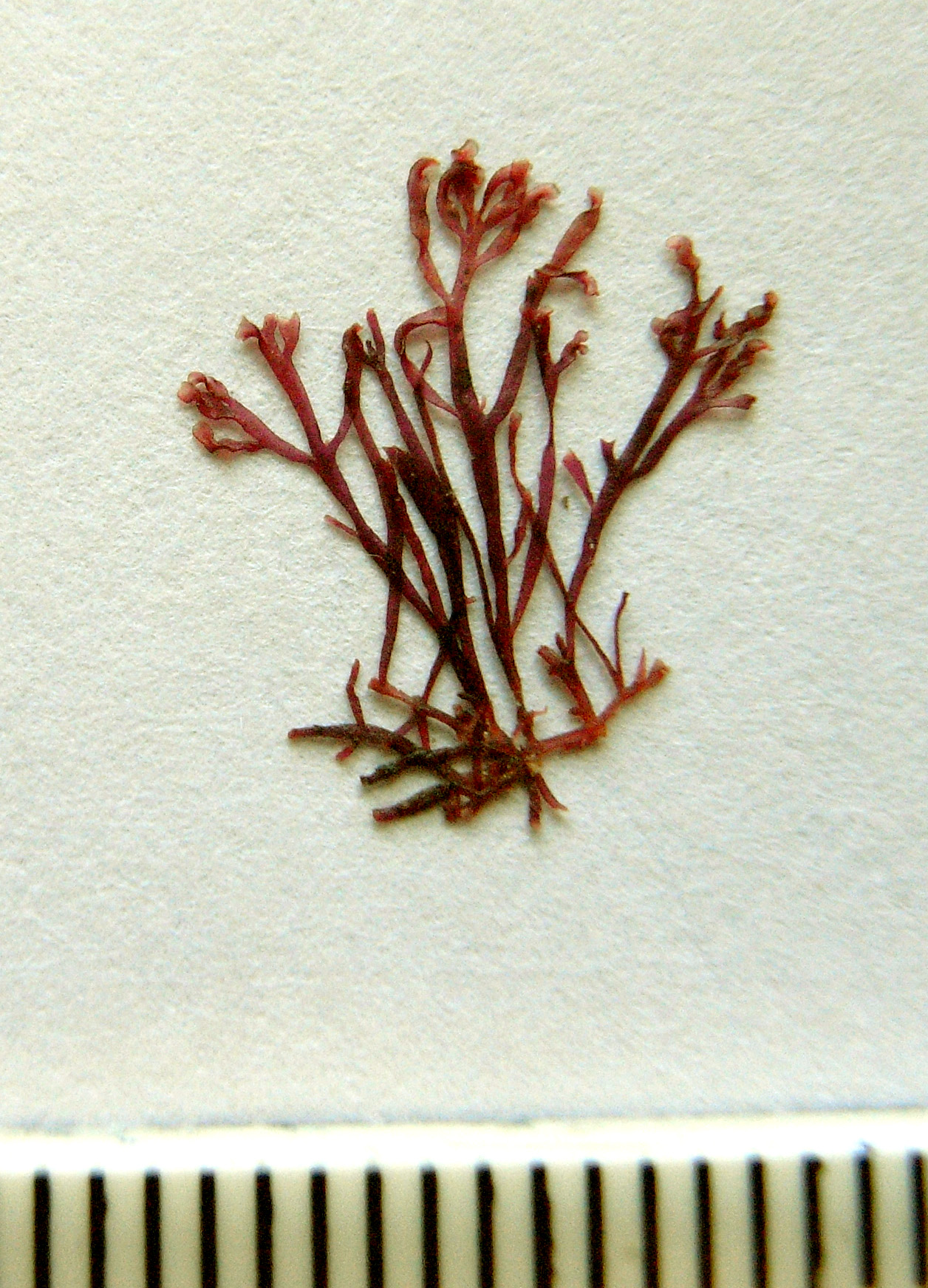Seaweeds of the South African South Coast


Order Gelidiales
Family Gelidiaceae
Gelidium De Clerckii E. M. Tronchin in Millar and Freshwater 2005: 236, figs. 53-65
Plants dark purple, up to about 12 mm tall, forming turf on rock or mollusc shells, comprising dense branched uprights arising from cylindrical prostrate axes; prostrate axes about 125 µm in diameter, irregularly attached by rhizoids that either taper or end in brush-like haptera; uprights cylindrical to subcylindrical in proximal regions becoming flattened and broadening distally to up to 600 µm wide, apices blunt, sometimes bi- or tripartite, often lacerated, uprights often with surface papillae or proliferations, branching irregular, mostly near bases or apices of uprights; distal branches in up to five orders, irregularly twisted and curled. Anatomy of pigmented cortical cells, outer cortical cells to 8 µm long, rectangular, inner cortical cells mostly globose and 6-10 µm in diameter; rhizines clustered between inner cortical cells and interspersed throughout medulla; medullary filaments thick walled and up to 17 µm wide; cell dimensions of cylindrical stolons slightly larger. Tetrasporangial and spermatangial sori sub-apical, on both surfaces of blades. Tetrasporangia 22-34 µm long and 22-30 µm wide in surface view; cystocarps unknown.
Collections ecology and regional distribution
Collected in the East London area (Kidd’s Beach and Nahoon Point; 41), as a short turf on rock and mollusc shells in the eulittoral zone (Millar and Freshwater 2005). This inconspicuous and recently-described species is likely to be more widespread than current collections indicate.
World distribution: Known also from New South Wales, Australia (Millar and Freshwater 2005).
Type locality: Jervis Bay, New South Wales, Australia (Millar and Freshwater 2005).
Note: superficially similar to the numerous varieties of Gelidium pusillum that have been described from various parts of the world, G. De Clerckii is distinguished by “uprights with irregularly curled and twisted distal ends” (Millar and Freshwater 2005). It was discovered almost simultaneously in South Africa and Australia, and the conspecifity of the entities established by molecular studies.

G. De Clerckii, Kidds Beach (Type specimens, BOL).

G. De Clerckii, Kidds Beach (scale divisions = 1mm) (BOL).
References Gelidium De Clerckii
Millar AJK and DW Freshwater 2005. morphology and molecular phylogeny of the marine algal order Gelidiales (Rhodophyta) from New South Wales, including Lord Howe and Norfolk Islands. Australian Systematic Botany 18: 215-263
Cite this record as:
Anderson RJ, Stegenga H, Bolton JJ. 2016. Seaweeds of the South African South Coast.
World Wide Web electronic publication, University of Cape Town, http://southafrseaweeds.uct.ac.za; Accessed on 07 January 2026.